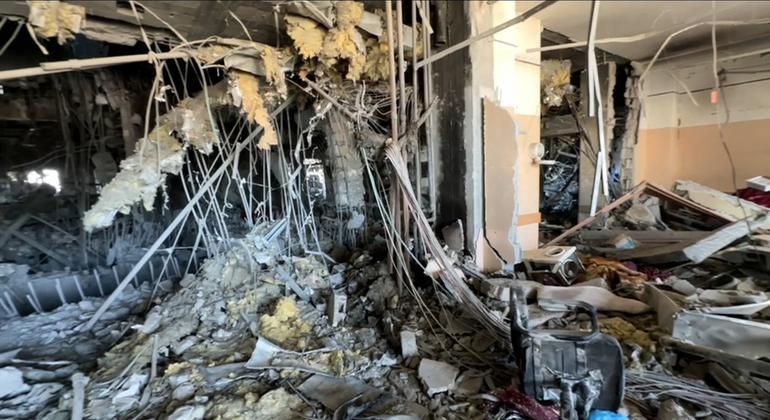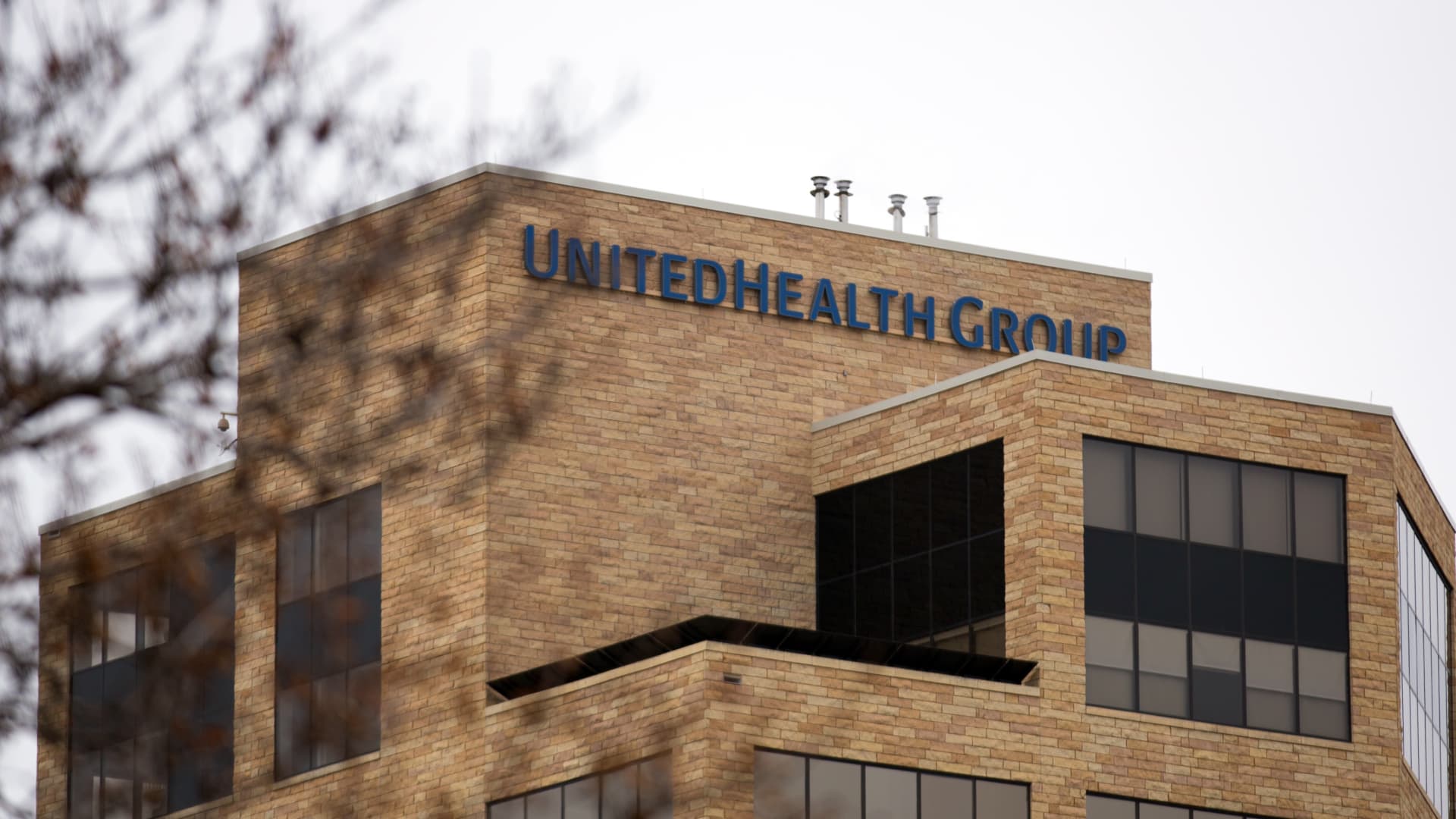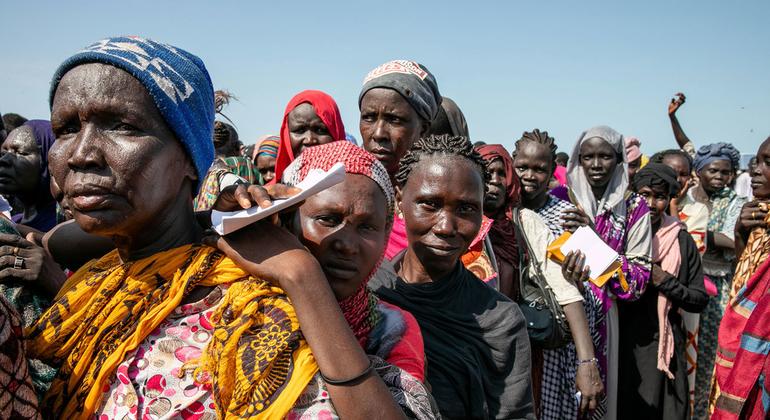That is the assessment following a WHO-led multi-agency mission to Al-Shifa Hospital in northern Gaza on April 5, which examined the extent of destruction following a weeks-long Israeli offensive aimed at eradicating the forces militants who supposedly operated inside.
The highly complex mission was carried out in collaboration with the acting hospital director.
Prior to the mission, WHO's efforts to reach the hospital to evacuate patients and staff and conduct an assessment were rejected, delayed or hindered six times between March 25 and April 1.
'An empty shell'
Like most of the north, Al-Shifa hospital “is now an empty shell after the latest siege,” the WHO said, and there are no patients left in the facility.
“Most of the buildings are severely damaged or destroyed and Most of the equipment is unusable or reduced to ashes..”
The WHO team said the scale of the devastation has left facilities completely inoperable, further reducing access to vital medical care in Gaza.
“Restoring even minimal functionality in the short term seems implausible and will require substantial efforts to assess and clear land containing unexploded ordnance to ensure safety and accessibility,” the WHO said.
The hospital's emergency, surgical and maternity department buildings were severely damaged due to explosives and fires.
At least 115 beds in what was once the emergency department have been burned and 14 incubators in the NICU destroyed, among other assets. An in-depth assessment by a team of engineers is needed to determine whether these buildings can be safe for future use.
The hospitals The oxygen plant has been destroyed. leaving Kamal Adwan Hospital as the only source of medicinal oxygen production in the north. A more thorough evaluation is essential to evaluate the functionality of vital equipment such as CT scanners, ventilators, sterilization devices, and surgical equipment.
A multi-agency UN team is assessing the destruction of Al-Shifa Hospital in Gaza City following the end of the latest Israeli siege there.
ment, including surgical tools and anesthesia devices, the agency reported.
shallow graves
Numerous shallow graves have been dug just outside the emergency department and administrative and surgical buildings, the WHO said.
“In the same area, Many corpses were partially buried with their limbs visible.. During the visit, WHO staff witnessed at least five corpses lying partially covered on the floor, exposed to the heat” with “a pungent smell of decomposing bodies enveloping the hospital premises.”
“Safeguarding dignity, even in death, is an indispensable act of humanity”added the agency.
According to the acting director of the hospital, The patients were held in terrible conditions. during the siege. They suffered from a severe lack of food, water, healthcare, hygiene and sanitation, and were forced to move from one building to another at gunpoint. At least 20 patients have reportedly died due to lack of access to care and the limitation of authorized movements for health personnel.
Unnecessary delays
Despite the deconfliction, Friday's mission faced significant delays. at the military checkpoint on the way to Al-Shifa hospital. On the same day, another WHO-led mission to Al-Awda and Kamal Adwan hospitals in northern Gaza – to deliver medical supplies, fuel, deploy emergency medical teams and support the referral of critical patients – faced delays. unnecessary, including the arrest of a supply trucker who was part of the convoy.
Between mid-October and the end of March, more than half of all WHO missions have been denied, delayed, prevented or postponed. “As health needs increase, the lack of a functional conflict resolution system is a major obstacle to delivering humanitarian aid on the scale needed,” the UN health agency said.
The destruction of the Al-Shifa hospital and the Nasser medical complex in the southern city of Khan Younis last month,”has broken the backbone of the already weakened health system.”

The images show the destruction of the Al-Shifa hospital in Gaza, after the end of the latest Israeli siege. The World Health Organization (WHO) reiterated that hospitals must be respected and protected; not to be used as battlefields.
As the WHO celebrates World Health Day on Sunday, under the theme My health, my right.This basic right is completely out of reach for Gazan civilians, the agency stated.
“Access to healthcare in Gaza has become totally inadequate, and the ability of WHO and its partners to help is diminishing. constantly interrupted and impeded.”
Of the 36 main hospitals that used to serve more than two million Gazans, only 10 remain functioning to some extent, with severe limitations on the types of services they can provide.
Rafah invasion: “unimaginable health consequences”
Any military incursion into Rafah, where nearly 1.5 million people are sheltering, can only lead to further loss of healthcare and would have unimaginable health consequences.
“He The systematic dismantling of healthcare must end.”said the WHO.
He also demanded the opening of additional land crossings, as Israel has indicated it was willing to do following a call to the White House earlier in the week, to allow more secure and direct access to and through Gaza.












